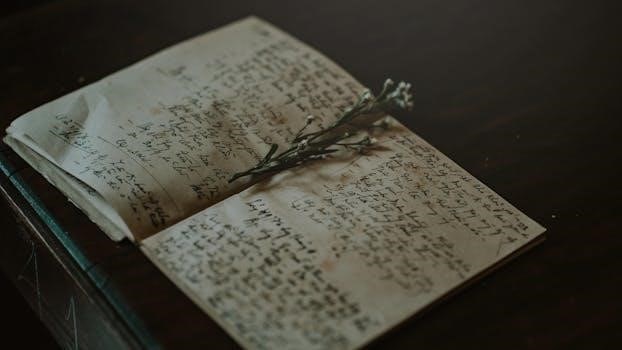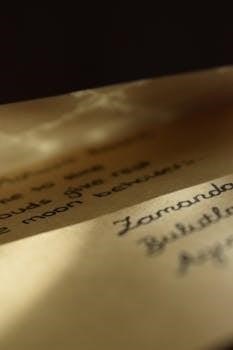Script Authors of The Wizard of Oz
The screenplay for the beloved film involved multiple writers. Primarily, Noel Langley, Florence Ryerson, and Edgar Allan Woolf all contributed to the script. They adapted L. Frank Baum’s book, creating a timeless cinematic classic with their work.
Noel Langley’s Role in the Script
Noel Langley served as the primary screenwriter for The Wizard of Oz, undertaking the significant task of adapting L. Frank Baum’s novel into a cohesive screenplay. His 1938 typescript draft, which spans 116 pages, highlights his substantial contribution, which was crucial in shaping the film’s narrative structure and dialogue. Langley’s draft, dated between May 4th and 6th, 1938, gives an insight into the early development of the movie. He is credited with crafting many of the film’s iconic scenes and memorable lines. Langley’s work involved not just transcribing the story but also translating its fantastical elements into a visual medium. His efforts were essential in bringing the Land of Oz and its enchanting characters to life on the big screen, thus solidifying the film’s lasting appeal. He provided the backbone of the script, making it the foundation for the magical journey we know today. He played a pivotal role in creating what became one of the most beloved cinematic adventures.
Florence Ryerson’s Contribution
Florence Ryerson also played a critical role in shaping the screenplay for The Wizard of Oz. As one of the credited writers, Ryerson brought her unique storytelling perspective and skills to the adaptation. Her contributions were essential in refining the characters’ interactions, enhancing the emotional depth, and ensuring that the story resonated with its intended audience. Ryerson’s work complemented Langley’s, helping to weave together a richer narrative tapestry. She helped craft dialogue and character moments that are still cherished today. Although her specific contributions might be less documented than Langley’s, her impact on the final script was undeniable. She was a key part of the collaborative process that resulted in the memorable film. Her expertise in storytelling helped to bring a sense of heart and magic to the movie. Ryerson helped to establish the emotional core of Dorothy’s journey, making it a timeless tale for all ages. Her involvement was vital in creating the beloved classic.
Edgar Allan Woolf’s Involvement
Edgar Allan Woolf was another vital member of the writing team for The Wizard of Oz, adding his unique touch to the screenplay. As a credited writer, Woolf contributed to the intricate process of adapting L. Frank Baum’s novel for the big screen. His involvement ensured the story maintained a balance of fantasy and adventure. Woolf helped to shape the characters, their motivations, and their interactions. His work was key to creating the dynamic and engaging narrative that audiences have come to adore. His specific contributions are intertwined with those of Langley and Ryerson, forming a cohesive and memorable script. Woolf’s expertise in dramatic structure was beneficial in ensuring the film’s pacing and flow. He assisted in developing many of the film’s iconic scenes and dialogue, helping solidify the movie’s place in cinematic history. Together, these three writers collaborated to create one of the most beloved screenplays of all time. Woolf’s role was essential in crafting the magic of the movie.

Key Script Elements
The script features several iconic components, such as the “Follow the Yellow Brick Road” sequence. Dorothy’s journey through Oz and the introduction of its memorable characters are also significant, forming the core of the story.

Follow the Yellow Brick Road Sequence

The “Follow the Yellow Brick Road” sequence is a pivotal and visually striking element of the screenplay. This iconic scene sees Dorothy, along with her companions, embarking on their journey towards the Emerald City. The sequence is characterized by the characters singing and dancing as they move along the bright yellow path. The camera work is designed to emphasize their progress, and the sequence is a moment of joy and optimism within the narrative. This sequence is not only memorable for its music but also for the way it visually represents the adventure and hope. It’s a key part of the script that has become a cornerstone of the movie’s identity. The journey along the brick road symbolizes the path to their goals and embodies the film’s adventurous spirit. It represents the movement forward and the anticipation of what’s to come. The sequence features the Scarecrow, Tin Man, Dorothy, and Lion all singing and moving forward. The camera trucks ahead to keep pace with their progress. This scene is a perfect example of the film’s use of music and movement to enhance the storytelling. The vibrant visual is an important aspect of the script and the film’s impact.
Dorothy’s Journey in Oz
Dorothy’s journey in Oz is the central narrative thread of the screenplay, taking her from a Kansas farm to a magical land. Swept away by a tornado, Dorothy finds herself in a fantastical world, encountering numerous challenges and adventures. Her journey is not just a physical one, but a personal one, as she learns about friendship, bravery, and the importance of home. The screenplay details her encounters with the Munchkins, the Wicked Witch of the West, and the various inhabitants of Oz. It shows her transformation from a frightened girl to a courageous young woman. Dorothy’s path is filled with both dangers and moments of wonder, providing a compelling and emotional storyline. The script emphasizes her desire to return home, driving her actions and interactions with other characters. She is not alone on this journey, as she makes lasting friendships that aid her in her quest. The script illustrates her resourcefulness and determination, showcasing her inner strength as she navigates the unfamiliar world of Oz. Her adventure is a powerful tale that resonates with audiences, highlighting themes of courage and self-discovery.
The script carefully introduces each key character, establishing their personalities and roles within the story. Dorothy, initially presented as a young girl in Kansas, is quickly propelled into Oz where she meets a diverse group of individuals. The Munchkins, a cheerful and diminutive people, are the first inhabitants of Oz that Dorothy encounters. The script introduces the Scarecrow, seeking a brain, the Tin Man, longing for a heart, and the Cowardly Lion, yearning for courage. These characters are presented as incomplete individuals, each with a specific lacking that they hope to fulfill by meeting the Wizard. Their introductions are pivotal, setting up their individual journeys and the group dynamic. The screenplay uses their initial appearances to highlight their unique quirks and needs. The Wicked Witch of the West is introduced as the antagonist, quickly establishing her menacing nature. These introductions are crucial for setting the stage for the ensuing adventures and character development. Each character’s initial presentation is distinct and memorable, contributing to the film’s overall charm and enduring appeal. The script effectively uses these introductions to establish the core themes and conflicts of the story.

Script Versions and Availability
Various versions of the script exist, including early drafts and the final shooting script. These are available in print and online, often for educational purposes. Some publications also include scenes cut from the final film.
1938 Draft by Noel Langley
Noel Langley played a pivotal role in shaping the screenplay, and a significant draft from 1938 is attributed to him. This particular version, dated between May 4th and 6th, 1938, provides a glimpse into the evolution of the story before the final shooting script was completed. The 116-page typescript reveals Langley’s initial approach to adapting L. Frank Baum’s novel for the silver screen; This draft showcases the early dialogue, scene descriptions, and character interactions that would later become so iconic. It appears that this version contains some of the key elements that made their way into the final movie. This specific draft is a valuable resource for studying the development of the narrative, offering a perspective on the creative decisions made during pre-production. Langley’s work in this draft laid the foundation for the beloved film we know today.
Complete Screenplay Publication
The complete screenplay of “The Wizard of Oz” has been made available in print, offering a detailed look at the film’s narrative structure. This publication marks the first time the entire script has been accessible, including scenes that were ultimately cut from the final movie. This provides an intriguing insight for fans of the movie and film scholars. It allows for a comprehensive study of the story’s development. The screenplay includes all of the dialogue, action sequences, and scene descriptions as they were originally envisioned by the writers. This printed version also includes a brief historical background of the film. It is an invaluable tool for anyone interested in the art of screenwriting and the making of this beloved film. The availability of the complete screenplay allows for further understanding and appreciation of the classic.
Educational Use of the Script
The script for “The Wizard of Oz” has become a valuable resource for educational purposes, offering students and educators a rich text for analysis. The detailed screenplay, now readily available, allows for in-depth studies of narrative structure and character development. It also serves as an excellent example of how a classic novel can be adapted to the screen. The script also demonstrates the collaborative nature of filmmaking, showing how multiple writers contributed to the final product. Educators also use the script to explore themes of friendship, courage, and self-discovery found in the movie. It provides a platform for discussions about the creative process, the elements of storytelling, and the impact of film on culture. Furthermore, it is a great tool for aspiring screenwriters, providing a practical example of effective storytelling techniques. The script’s availability makes it easy to incorporate into academic settings and workshops.
